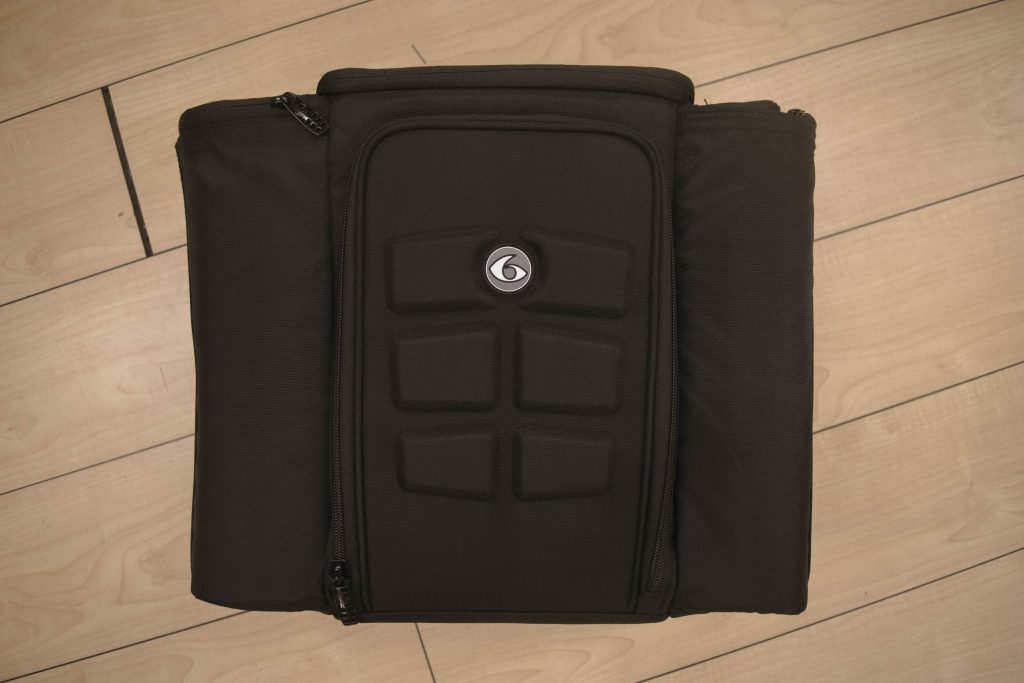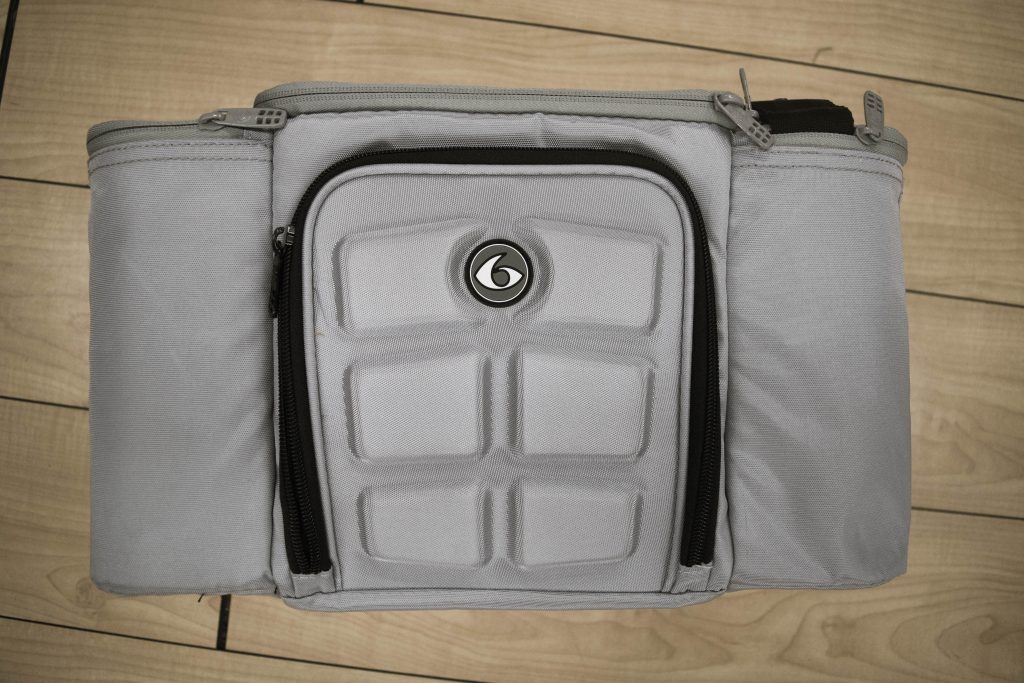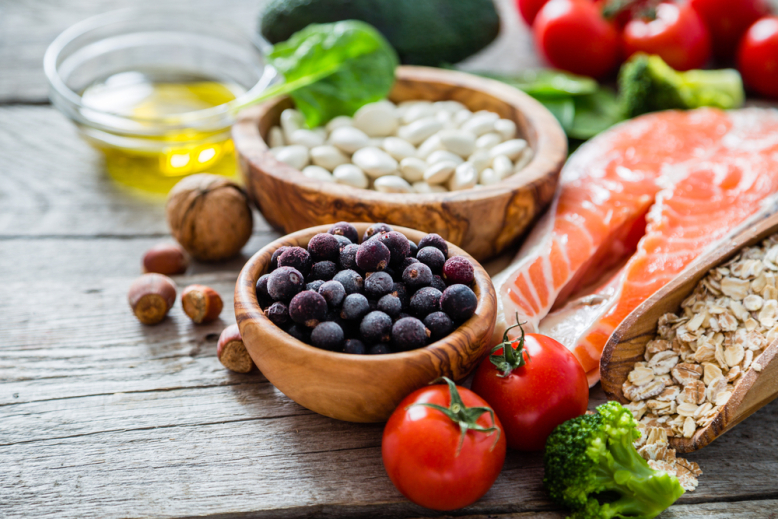Foods high in Omega-3’s help promote improved brain and heart health. Load your diet with salmon and berries!
Bulking: Find Your Macro Ratio
One of the most common problems across the fitness world is the breakdown of one’s macros. We can safely say that every person is different, which makes macro ratio a bit of a tricky subject. But, through years of experience with our personal routines and others, we have came up with a model that works for most. Our method uses a flexible diet or IIFYM protocol and will make you actually enjoy the foods you eat!
WHAT IS FLEXIBLE DIETING?
If It Fits Your Macros (IIFYM), then it will be included in your daily intake. This specific diet focuses on the three major macronutrients: Protein, Fat and Carbohydrates. During this bulk diet, you are allowed to eat whatever you want, as long as it fits your macro targets. Our preferred approach is to keep the diet clean and remember to get as much fiber as possible. This will help maintain bowel health, improve digestion and control blood sugar levels.
WHY ARE MACROS IMPORTANT?
Macronutrients are known as the building blocks of all of the food that we eat. They are the source of all calories that our bodies receive from food. They work as a team and play a distinct role to help you reach your fitness goals. In order to increase muscle growth and promote optimum recovery, we must replenish our body with the essential macro ratio.
Fat: One of the most calorie-dense and overlooked macros, fats can help provide energy and support a healthy immune system function. Also, they can help to balance hormones and power your nervous system (your brain is 60% fat). A common misconception in regards to nutrition is that dietary fat and bodily fat are the same. However, dietary fat as a macronutrient is used by your body as a source of carbons to provide energy. These carbons, which can be derived from all macronutrients, are later stored as bodily fat.
Carbs: As the preferred energy source for our bodies, we emphasize a timed routine that optimizes carbohydrate intake. Known as the transportation system for protein to get to the muscles, our favorite time to eat these are after workouts. Be careful with too much as carbs can spike your blood sugar and send your hunger through the roof.
Protein: Arguably the most popular of the three, protein is very demanding to increase recovery from intense training. That is why we suggest protein no later than 30-60 mins after a workout. If you don’t get enough protein in your diet, it’s almost impossible to expect weight gain. On the other hand, if you get too much of it (and aren’t going complete Keto), then you can expect to be sluggish, as protein is not the best energy source.
MACROS VS. MICROS
One thing that IIFYM doesn’t account for is micronutrients. These are known as the vitamins, minerals, and fiber that are included with macros. These might be difficult to track but they help our body performing at its best.
For the most part, getting your macronutrients from whole plant foods and animal proteins will optimize your micronutrient intake. If not, we recommend leafy greens that are loaded with micros and extremely low in macros, so they’re basically “free”.
Have you ever felt sick a couple of weeks into a new workout routine? This might be an attack on your micronutrients. We recommend a whole food multivitamin that your body will recognize and utilize, the best.
CHOOSE YOUR CALORIE INTAKE
Our favorite part about flexible dieting is that it is tailored to every individual to work best for their body. As you calculate your starting point, we recommend assessing any changes 2 weeks out. Some individuals do better with more fat (ketogenic diet) while others thrive with more carbs.
Now that we’ve cleared that up, an easy way to calculate an effective starting point is with a little bit of math. Keep in mind, since everybody is different, it is crucial that evaluations are made based on your progress.
It’s all about what works for you.
To Maintain Weight
To Gain Weight
Men:
Bodyweight x 15
Ex: Male | 200 lbs. | 3,000 cal.
Women:
Bodyweight x 13
Ex: Female | 110 lbs. | 1,430 cal.
From what you calculated, you now have the amount of daily calories needed to maintain weight. From here, we recommend adding 250-500 calories as a start. Keep in mind, your calculated goal is taking workouts into consideration. If you have an injury or are taking a break, adjust calories as needed to prevent unwanted body fat. You can also apply some products from CBD Shop on the injured area to reduce the swelling if ever.
FIND YOUR MACRO SPLIT
Now that we got the easy part over with, it’s time to find your ideal split of macronutrients. Remember, everybody is different so we like to start off with a manageable macro ratio. This includes a more even split of:
40%
1,200 calories
Protein
30%
900 calories
Fats
30%
900 calories
Carbohydrates
Now that we know the split of calories, we must convert them to grams so it’s easier to account for during meal prep.
Protein
4 Calories = 1 Gram
1,200 / 4 = 300 grams
Fat
9 Calories = 1 Gram
900 / 9 = 100 grams
Carbs
4 Calories =1 Gram
900 / 4 = 225 grams
For the continued example, we can see that our daily goal is to get 300 g of protein, 100 g of fat, and 225 g of carbs.
SPLIT YOUR MEALS
We now have a daily caloric goal of 3,000 calories and a macro ratio, so let’s get to the meal prep! The ideal amount of meals we want to get is 6 a day, but it’s fine to drop that down to 5, maybe even 4. Just remember that snacking is crucial to help fight cravings and keep your body metabolizing.
4 Meals a Day
Each meal should be relatively close to:
Protein: 75 grams
Fat: 25 grams
Carbs: 56.25 grams
5 Meals a Day
Each meal should be relatively close to:
Protein: 60 grams
Fat: 20 grams
Carbs: 45 grams
6 Meals a Day
Each meal should be relatively close to:
Protein: 50 grams
Fat: 17 grams
Carbs: 38 grams
Our new six pack bags come with tupperware, ice packs, and enough room to take keep your meals cold and easily accessible!


A DAY OF EATING
With everything out of the way, now let’s get to the fun part. A full day of eating with a morning of training will go something along the lines of this.
Breakfast
- Steak/Bacon
- Eggs
- Oatmeal
- Blueberries
- Flax Seed
Lunch
- Jasmine Rice
- Green Peas
- Chicken
- Sweet Potato
- Avocado
Dinner
- Salmon (cooked in coconut oil)
- Quinoa
- Asparagus
- Avocado
Snacks
Protein Shake (after workout w/ meal)
- Protein Powder
- Almond Milk
- MCT Oil
- Chia Seed
Fruit (pick 1 for breakfast or lunch)
- Green Apples
- Cantaloupe
- Berries (Any)
In Between Meals
- Pita Chips
- Goat Cheese
- Salami
This layout is designed to give you an idea of a day of eating, but macros and calories are not accounted for. As mentioned before, everybody is different from our metabolic process to our allergies. This information is designed to jumpstart your current routine if you have experienced a plateau. Assessment every 2 weeks is critical to how much progress you expect from any routine.

